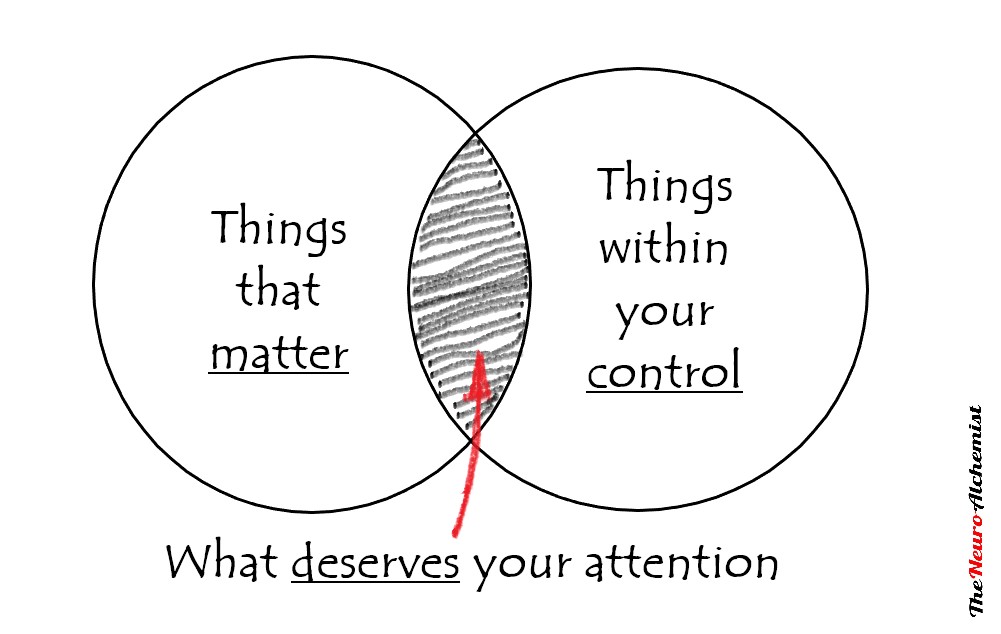
“Do not dwell in the past, do not dream of the future, concentrate the mind on the present moment.”
Buddha
Inner peace often feels like an elusive dream, especially when life’s challenges come at you all at once. Every deadline, every problem, and every expectation seem to demand your attention simultaneously, leaving you overwhelmed and stretched too thin.
But what if the solution isn’t to conquer the chaos but to narrow your focus? This is where the idea of the “Three-Foot World” comes in—a mindset borrowed from climbers and Navy SEALs.
When dangling off the side of a cliff or navigating high-stakes missions, they aren’t concerned with the entire mountain or battlefield.
Their attention is locked on the three feet around them, the small zone where their actions actually make a difference.
This concept aligns beautifully with Stoicism, a philosophy that’s as relevant today as it was in ancient Rome. Marcus Aurelius, the Stoic emperor, believed inner peace comes from focusing solely on what’s within your power and letting go of the rest.
In this post, I’ll delve into how you can apply this philosophy to enhance your focus, tackle challenges, and nurture the inner peace you’ve been longing for.
Let’s get started.
Inner peace isn’t found in some mountaintop retreat or a perfectly balanced life. It’s found in the gritty, messy act of focusing on what’s right in front of you.
That’s where the idea of the “Three-Foot World” comes in—a philosophy that’s deceptively simple yet profoundly transformative.
This concept was born in the world of rock climbing. Picture this: you’re dangling hundreds of feet above the ground, your life depending on a few ropes and a prayer.
Freaking out about the height, the weather, or how far you have to go isn’t just unhelpful—it’s dangerous. Climbers are trained to narrow their focus to the three feet around them. The next handhold, the next step—that’s all that matters.
It’s not just climbers who rely on this mindset. Navy SEALs use the “Three-Foot World” in life-or-death missions.

When chaos is swirling and everything feels out of control, they don’t try to solve the entire battlefield. They lock in on the immediate—what’s within their reach, what they can actually affect.
Now, here’s where this concept gets really interesting: It mirrors the Stoic idea of the dichotomy of control.
The ancient Stoics, like Marcus Aurelius and Epictetus, argued that life is divided into two realms—what you can control and what you can’t.
Your thoughts, actions, and responses? Yours to command.
The opinions of others, the economy, or whether it rains tomorrow? Forget about it.
And yet, how often do we ignore this wisdom? We waste hours obsessing over what might happen next week or agonizing about things that are utterly out of our hands.
Meanwhile, the things we can control—our work, our relationships, our peace of mind—slip through our fingers.
The Three-Foot World demands discipline but offers liberation. By narrowing your focus to what’s directly in front of you, you reduce overwhelm, reclaim clarity, and, most importantly, build a foundation for genuine inner peace.
The question is: Are you ready to let go of what doesn’t matter and master what does?
Inner peace doesn’t come from controlling the world around you—it comes from mastering the world within you. This encapsulates the essence of Stoic philosophy, providing a practical guide for managing life’s chaos with clarity and strength.

The Stoics believed in a stark but empowering reality: there are things you can control, and there are things you cannot. Epictetus, the ancient philosopher-slave-turned-teacher, laid it out plainly:
“Make the best use of what is in your power, and take the rest as it happens.”
Focus on your sphere of influence—your thoughts, actions, and reactions—and let go of the rest. The modern world might call this “staying in your lane,” but the Stoics saw it as the foundation for mental clarity and, yes, inner peace.
But what does this look like in practice? Imagine the Roman emperor Marcus Aurelius during one of the empire’s worst plagues.
While fear and death swept through his kingdom, Marcus didn’t crumble under the enormity of the crisis. Instead, he focused on what he could do: leading with integrity, maintaining his personal virtue, and writing meditations that continue to guide us centuries later.
As Marcus himself wrote:
“You have power over your mind—not outside events. Realize this, and you will find strength.”
Then there’s Seneca, a statesman and philosopher who lived under the ever-looming threat of political betrayal. He endured exile, accusations, and the constant possibility of execution.
Yet, instead of spiraling into despair, Seneca leaned into his own “three-foot world,” writing letters filled with calm, deliberate wisdom—words that would go on to inspire millions.

What these Stoics understood is that the world is often uncontrollable and chaotic. Plagues, betrayals, exiles—these aren’t things you can fix with sheer willpower.
Minding your three-foot world means that you don’t need to solve life’s big problems to find peace. All you have to do is control your own thoughts and behavior in the here and now.
Inner peace sounds like the ultimate goal, but in a world that’s constantly tugging at our attention, it often feels out of reach. Why?
Because staying focused on what’s within your control—your “three-foot world”—has never been harder than it is today.
Take social media, for example. Platforms like Instagram and TikTok are engineered to pull us in a thousand directions, showing us everything we’re missing out on and amplifying crises we have no power to influence.
A 2022 study by the American Psychological Association revealed that excessive social media use is directly linked to increased levels of anxiety and stress.
When your mind is cluttered with endless scrolling, it’s nearly impossible to zero in on the present moment—the space where your real power lies.
Then there’s our obsession with outcomes. Society constantly tells us to aim for success, win approval, and chase achievements. But this outcome-focused mindset often backfires.

Instead of concentrating on the process—what you can do right now—you become consumed by the fear of failure and the need for external validation. As author Brené Brown points out:
“When we attach our self-worth to what others think, we hand over our power.”
And the psychological impact? It’s brutal.
Trying to control the uncontrollable is like playing a rigged game. You’ll never win, and the effort only leaves you exhausted.
Clinical psychologist Dr. John Grohol emphasizes that chronic stress and anxiety often stem from fixating on problems outside of our sphere of influence. The more you chase control over things you can’t change, the more fragmented your focus becomes.
The result? You lose sight of your three-foot world—the immediate tasks and decisions that could bring clarity and calm.
But here’s the truth: reclaiming your inner peace doesn’t require shutting out the world entirely. It’s about learning to tune out the noise and bring your focus back to what you can influence.
By letting go of the big-picture chaos and locking into your next step, you regain the mental space to thrive. The question is, can you filter out the distractions and concentrate on what’s important?
If achieving inner peace feels like climbing a sheer rock face without a harness, you’re not alone. The key to navigating your life lies in a simple shift of focus: mastering what’s within arm’s reach.
Here’s how to hone your “three-foot world” and take control of your peace of mind.
When life feels overwhelming, try this:
Pause, take a deep breath, and focus on your immediate surroundings.

This mindfulness technique helps you center your attention on what truly matters now. Marcus Aurelius often started and ended his day by asking himself what he could control and how he could act virtuously.
In his Meditations, he writes:
“When you arise in the morning, think of what a precious privilege it is to be alive.”
This simple daily habit can help clear your mind and show you the way forward.
Feeling overwhelmed? It’s time to take control and reclaim your focus.
Imagine a climber facing a sheer, towering mountain. They don’t panic about the summit miles above or the dizzying height below.
They zero in on one thing: the next handhold. This isn’t just a climbing technique—it’s a game-changing strategy for navigating life’s chaos.
Think about your own “mountain”—overflowing emails, looming deadlines, or a never-ending to-do list. Instead of letting it all crush you, break it down.
Choose just three tasks you can tackle today. Every small win builds momentum, bringing you one step closer to clarity, progress, and inner peace.
So, what’s your next handhold? Take it.
Journaling isn’t just a pastime. It’s a tool for transformation. For the Stoics, it was a daily practice to sift through the chaos and focus on what truly mattered.
Here’s a simple exercise to get started: Each evening, jot down one challenge you faced, how you responded, and whether it was within your control to change.

This habit does more than organize your thoughts—it trains your mind. By writing things down, you’ll start to see how you think, tackle challenges with a sharper focus, and build the resilience needed to face whatever comes your way.
As Epictetus wisely observed:
“We are disturbed not by events, but by the views we take of them.”
Through reflection, you’ll begin to see challenges not as barriers but as opportunities to grow. So, grab a journal and start tonight—your path to clarity and inner peace is just one entry away.
Life will throw curveballs—it’s inevitable. But here’s the game-changer: your reaction is entirely up to you.
The next time you face a setback, don’t let it hijack your emotions. Pause. Take a deep breath, and ask yourself:
Is this really worth my energy?
What can I learn from this experience?
The Stoics had a strategy they called praemeditatio malorum. Translated from Latin, it means “the pre-meditation of evils.”
In simpler terms, it’s about thinking ahead—anticipating what might go wrong before it does. By envisioning possible setbacks, they are always mentally prepared for any adversity.
When you reframe challenges as opportunities, you don’t just react—you respond. This approach doesn’t just strengthen your resilience. It cultivates the inner peace needed to navigate life’s chaos.
So, the next time life tests you, remember: control your reaction, and you control the outcome.
Some battles just aren’t worth fighting—and that’s the secret to inner peace. It’s not about giving up; it’s about letting go of what you can’t control.

Take a sudden storm, for instance. While you can’t control the rain that disrupts your outdoor plans, you can change your perspective.
Rather than dwelling on the weather, take that opportunity to engage in something productive, enjoyable, or fulfilling.
Certain things will always be out of your hands—like other people’s actions, the twists of the economy, or life’s unpredictable curveballs. Fighting these uncontrollable forces only drains your energy.
When you stop wasting energy on the uncontrollable, you’ll discover just how much power you actually have.
What’s one thing in your life right now that’s keeping you up at night? A looming work deadline, a strained relationship, or perhaps your health?
Whatever it is, the stress feels endless, doesn’t it?
Here’s the solution: stop trying to fix everything at once. Apply the three-foot world philosophy.
This isn’t some abstract theory reserved for philosophers. It’s a real, practical method to reclaim your focus and gain the inner peace you desperately need.
By narrowing your attention to what you can control—your thoughts, actions, and responses—you can silence the overwhelm.
Stoicism doesn’t ask you to ignore life’s challenges. It shows you how to face them with clarity and purpose.
You focus on what you can influence and let the rest take care of itself.
So, what’s your next step? Tackle that high-pressure project, find calm in your personal struggles, or simply regain control of your mental space.
Pick one strategy—be it mindfulness, journaling, or breaking tasks into smaller pieces—and start today.
Start small. Stay grounded. Focus.
The inner peace you seek is closer than you think.
DISCLOSURE: In my article, I’ve mentioned a few products and services, all in a valiant attempt to turbocharge your life. Some of them are affiliate links. This is basically my not-so-secret way of saying, “Hey, be a superhero and click on these links.” When you joyfully tap and spend, I’ll be showered with some shiny coins, and the best part? It won’t cost you an extra dime, not even a single chocolate chip. Your kind support through these affiliate escapades ensures I can keep publishing these useful (and did I mention free?) articles for you in the future.
READ NEXT